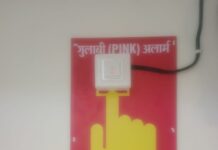The Reserve Bank (RBI) did not make any changes in the policy rates (repo) on Wednesday, due to fears of rising inflation and concerns about the risks of fiscal deficit. The Monetary Policy Committee (MPC), led by Governor Urjit Patel, has kept the repo rate at 6 per cent in the bimonthly review.
What is the repo rate
reserve bank for the third consecutive time has not made any changes in the repo rate in bimanic review. The repo rate is the rate at which the central bank lends to another commercial bank for immediate need. While the reverse repo rate is the rate at which the Reserve Bank lends to the banks immediately. The reverse repo rate is maintained at 5.75 percent. Actually, the Reserve Bank uses reverse repos to reduce the extra cash of banks.
In the inflation and interest rates:
When the interest rate reduces by the Reserve Bank, the banks also lower rates on loans. This makes all types of loans cheap with home and auto loan. When the debt becomes cheap then the demand in the market increases, there is a slight increase in inflation. In case of low inflation or a fall in inflation, it is easy to decide for the rate cut to the Reserve Bank. While there is a trend of inflation in inflation, the decision to cut rates for the Reserve Bank is extremely difficult as it is likely to increase inflation. Inflation has increased to 5.2 percent in December, from 5 percent in the previous month. The Reserve Bank’s goal is to keep inflation at 4 percent (two percent above or below).








